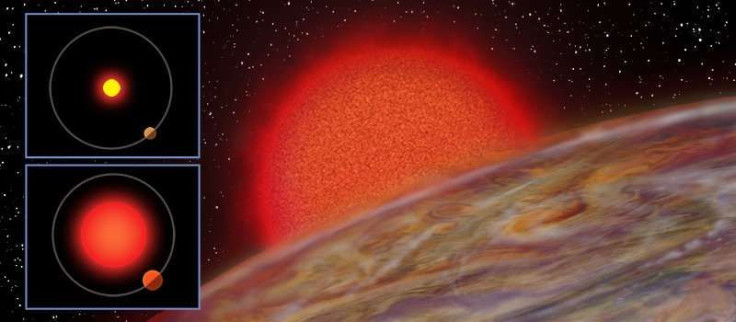Earth Building Materials Include Stardust From Red Giants, Study Finds
KEY POINTS
- The planets in our solar system were formed from the disc of gas and dust around the sun 4.5 billion years ago
- Each planet has its own unique stardust "fingerprint" from when they were formed
- Researchers of a new study argue that the stardust was mainly from red giant stars
- They also explain why there is more red giant material on Earth than other bodies in our solar system
It was about 4.5 billion years ago when an interstellar cloud collapsed and our sun formed at its center. The disc of dust and gas around it comprised of a mix of interstellar material such as stardust that formed around other suns and, from this mix, the Earth and other planets in our solar system were formed.
The stardusts in the mix were distributed unevenly throughout the solar system, with each planet having its own portion. According to the researchers of a new study published in the journal Nature Astronomy, the specific elements and abundance of different isotopes act rather like fingerprints because the planets and asteroids all have vastly different proportions when they were formed.
In the past decade, many experts have been studying meteorite samples and rock samples from Earth to demonstrate the anomalies, and the researchers of the study focused on the element palladium. However, they found that the meteorites actually contained fewer palladium anomalies than they predicted.
Researchers explain these results in their new study, arguing that the stardust at the formation of the solar system consisted mainly of material produced in red giant stars or aging stars that have exhausted their fuels. Through the slow neutron capture process, these stars produce elements such as molybdenum and palladium. However, less palladium was observed in the meteorite stardust they studied because palladium is more volatile or prone to evaporation than the other measured elements.
The question now is why there is more palladium on Earth compared to Mars or other bodies in the outer regions of the solar system where there was an accumulation of dust from supernova explosions.
According to the researchers, this might be because the temperatures closer to the sun were much higher, causing unstable or icy-crusted dust to evaporate. Interstellar material has more of such unstable grains, and they are also smaller so they evaporate more easily. On the other hand, red giant stardust is more stable, and therefore less prone to destruction. As such, more of the red giant stardust remained on Earth.
“This allows us to explain why the Earth has the largest enrichment of stardust from red giant stars compared to other bodies in the solar system,” study co-author Maria Schönbächler of the Institute of Geochemistry and Petrology at ETH Zurich said.

© Copyright IBTimes 2025. All rights reserved.






















